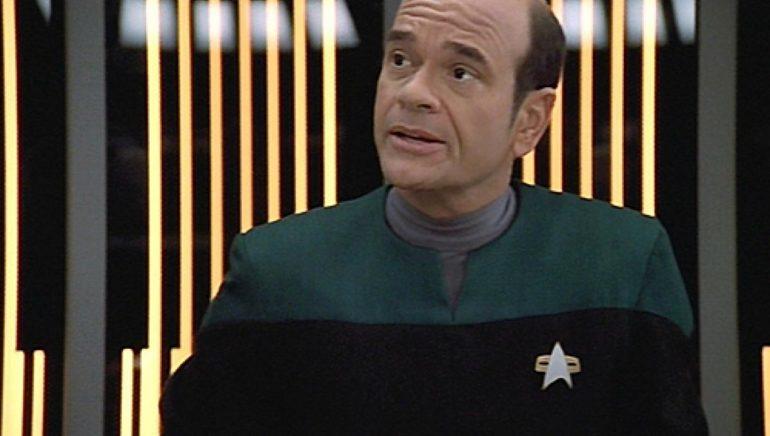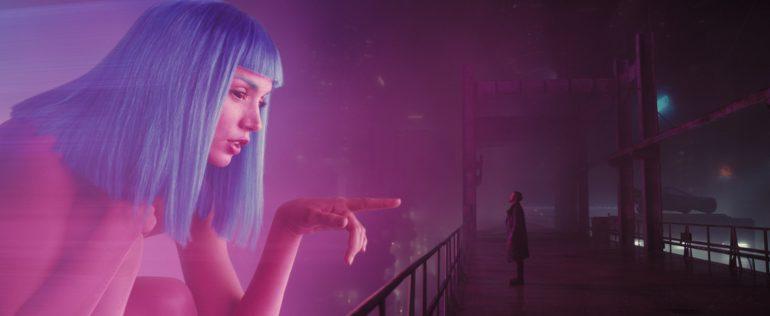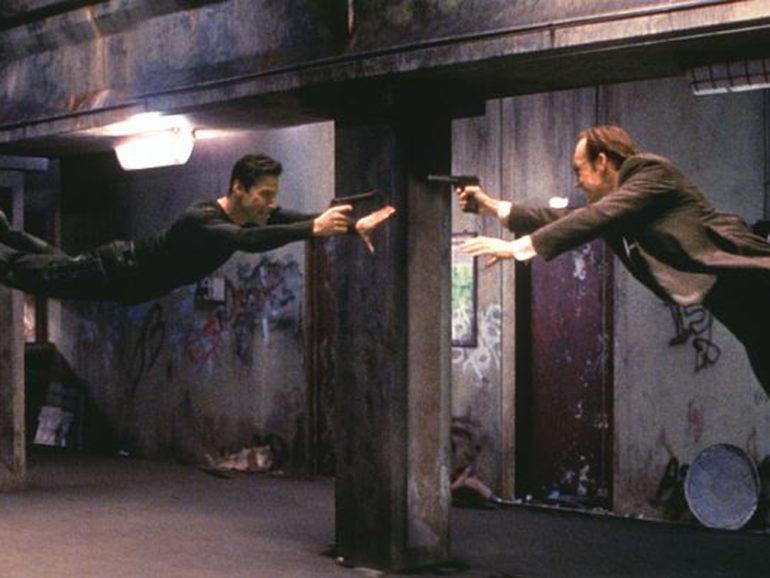The Top 5 Virtual/Simulated Characters and How They Foretold the Future
By Brian Crecente
LOS ANGELES (Variety.com) – Sunday, March 31 marks the 20th anniversary of landmark film “The Matrix,” a movie about a multitude of ideas all wrapped around the singular notion that the reality humans know is, in fact, an incredibly elaborate simulation run by computers, a sort of video game if you will.
In honor of the movie’s anniversary, Variety asked video game designer and author of the upcoming book ” The Simulation Hypothesis ” Rizwan Virk to walk us through what he views as the five most important virtual characters in science fiction and computer science over the last 30 years.
In his book, Virk explores the history of video game development and brings together arguments from computer sceience, artificial intelligence, video games, quantum physics and eastern and western religious texts to examine the nature of reality and answer the question of whether we’re living inside a Matrix-like simulated reality.
“When ‘’ came out in 1999, it was in the realm of science fiction,” said Virk. “In the 20 years since, with the evolution of MMORPGs, virtual reality, AR, AI, and neuroscience, we are getting closer and closer. In this book, I lay out a clear path from today’s tech to building the Matrix.”
In the list below, Virk explains how each of these five character simulations foretold the future in some way.
Virtual Character #5: Max Headroom
For most of us, Max Headroom, the stuttering talking head which rose to fame in the 1980s, was the first idea of a virtual character that could look human and actually speak, though with an electronically sampled voice.
Max first appeared in 1985 British made for TV movie, “
Max Headroom: 20 Minutes into the Future
.” Max became a celebrity in his own right, appearing in more than one movie, TV show and making guest appearances in various places. There was even an American TV series that aired from 1987-1988 called “Max Headroom” on ABC. On the British side, there was ‘The Max Headroom Show’, which ran for 3 seasons. Although his heyday was in the 1980s, Max also recently appeared in the movie Pixels in 2015.
Even those who remember the character probably don’t remember the back story. TV reporter Edison Carter (played by Matt Frewer) hit his head on a sign that said, “Max. Headroom 2.3m”. Later, his personality was uploaded to a computer, and Max was the virtual character that resulted from this “uploading of consciousness”.
Max had a very distinct personality – in fact creator Rickie Morton said that Max was the “very sterile, arrogant, Western personification of the middle-class, male TV host”. The world of the Max Headroom shows was a dystopian future run by TV networks – while they hadn’t imagined Google or Facebook in those days, this virtual character was one of the first that got us thinking about the whole idea of “virtual characters”.
How Max Headroom Foretold the Future:
Besides being a forerunner of all of today’s virtual characters, we are now seeing virtual characters start to creep into the newsroom. In fact, China’s Xinhua news agency recently introduced a male and female virtual news anchor, and I’m told (though I don’t speak Chinese) that they do a great job of reproducing a human news anchor, who may no longer be necessary. Max Headroom may have been prescient after all.
Virtual Character #4: The Doctor Hologram in Star Trek: Voyager
While the first (known as TOS, the Original Series) had Spock, a Vulcan and Star Trek: The Next Generation had Data, everyone’s favorite android who became a Star Fleet Officer, Star Trek: Voyager was one of the first TV series to have a virtual character as a regular member of the cast.
In the show, the spaceship Voyager went through a wormhole and was flung 70,000 light years away from Earth, to boot it didn’t have a doctor on the crew. That could be inconvenient since humans have an annoying habit of getting sick or malfunctioning in other ways.
Luckily, the ship had the newly created Emergency Medical Hologram, played by Bob Picardo, who always asked when he first became active, “What is the nature of your medical emergency?”, and seemed to be better than a lot of real doctors in diagnosing and curing members of the crew.
At first, the character was confined to the Medical Laboratory, where the holograph projectors were located which had his program. The doctor had a distinct personality and there were many stories about him. As the series evolved, they got him an armband which served as a mobile projector, so that the doctor wander around the ship. In a particularly interesting take on virtual vs. virtual character, in the episode “
Heroes and Demons
,” the Doctor (a hologram) went into a Holodeck re-creation of Beowulf, and interacted with the hologram characters there, who seemed less “real” and more “programmed” than he was – because they existed only inside the simulation, while the doctor existed outside of it, in Voyager.
How it foretold the future:
Holographic characters are starting to be taken more seriously. It happened with the Tupac hologram, and with AR it looks like the characters are inside physical environments. Though we don’t have emergency medical holograms, AI has developed recently that has gotten very good at diagnosing tumors from X-rays. In fact, this has been one of the areas that is most promising for machine learning.
Virtual Character #3: Virtual Influencers: Kizuna Ai and Lil Miquela
This spot goes to two (real life?) virtual characters that never existed on TV or in the movies. They are among the biggest YouTube stars – in fact, the days of YouTube celebrities being human may be a thing of the past.
The trend stated In Japan, with Kizuna Ai, an anime-inspired character who looks cartoonish, is a major star in Japan. In 2018, the character has not one but two YouTube channels and has over 2 million subscribers. She was known as the first “virtual YouTuber” and later, Mattel launched virtual Barbie as a real character. Today YouTube estimates over half a billion views that have been attributed to virtual influencers on the platform.
More recently, Silicon Valley got into the game as the creators of Lil Miquela, a more realistic looking CG characters he recent wave of virtual characters. These characters are now well-known enough and because of their AI, even though there are voice actors and regular actors they may be modeled on, are considered separate from those actors. Unlike say both Max Headroom and the doctor in Star Trek where the actor was a major part of creating the character, here 3d modeling and visualization techniques are used to create the characters and the latest artificial intelligence and machine learning techniques are used to make them seem real.
How they foretold the future:
This future is just being invented. Virtual characters are already doing a great amount of advertising. As these characters, who are for now just inside YouTube videos, are ever introduced inside video game-like simulations and allowed to run free, we may have the first real independent “virtual characters”. We may be some years off from this, but you can see the trend emerging.
Virtual Character #2: Joi from Blade Runner 2049
Of course, we couldn’t conclude this article without a reference to Philip K Dick, whose original story, “
Do Androids Dream of Electric Sheep
,” was the inspiration for the 1982 movie Blade Runner, starring Harrison Ford. There were many great artificial characters in that movie – but they were all embodied so don’t count as virtual characters for this list– including Sean Young as Rachel who had implanted memories and thought she was human, and Darryl Hannah’s Pris, the pleasure model of android, not to mention Rutger Hauer’s Roy Batty.
In the long-awaited sequel, Blade Runner 2049 (which wasn’t based on a Dick novel but his last wife, Tessa B. Dick, said he’d appreciate it, though she found it slow), Ryan Gosling plays K, who is an android detective. So where are the virtual characters in this?
It turns out that Joi, the hologram “girlfriend” of K, who was a virtual character, kind of stole the show for many people. She was, of course, one of many copies – anyone could buy a version of Joi to be their girlfriend, and K was enamored with her, and had a portable device to take her with him. Who can forget the advertisement for Joi, showing the virtual character at much larger than life-size? Her portability becomes important to the plot.
How This Foretold the Future:
The movie only came out recently, but the genre of the virtual girlfriend is an interesting one. In Japan, there was a gentleman who married a virtual character. In the 2014 movie, Her, Joachim Phoenix played a lonely tech guy who got a new operating system and fell in love with her. In a striking resemblance to a scene from Blade Runner 2049, the main character tries to have sex with the virtual character by using a surrogate. Virtual love and sex are new areas, but new technology helping with loneliness is not.
Virtual Character #1: Agent Smith from the Matrix
And, we come to the #1 virtual character. Since this article is in honor of the 20
th
anniversary of the release of the Matrix, who else could it be but the famous Agent Smith from “The Matrix” trilogy?
Played by Hugo Weaving, Agent Smith was a virtual character created by the super-intelligent machines that had created the Matrix, who was set out to find and destroy Neo (the main character, played by Keanu Reeves). Who can forget Agent Smiths’ slow delivery of Neo’s virtual character’s name, “Mr. Anderson” and not to mention the awesome special effects.
What made this character really special was that he could be in more than one place. In fact, in one of the sequels, he uploads his consciousness to one of the humans outside the matrix. A virtual character becoming real, and he finds he doesn’t like it. In another incredible example of why he’s the top virtual character on this list, Smith makes copies of himself and then proceeds to have the copied inhabit every single virtual character in the Matrix, everywhere. In fact, Empire magazine voted him the 84
th
most popular movie character of all time.
Even the creators of the Matrix, the super-intelligent machines had to be careful with this one – who seemed intent not just on killing Neo, but once he was released from the control of the machines, on destroying both the humans and the Matrix itself. While his ultimate fate isn’t fully explained, it’s theorized that the machines actually kill Agent Smith, by deleting all copies of him when his purpose has been served, by re-booting the Matrix. In fact, fan theories have cropped up which suggest that Agent Smith was the “Many” to Neo being the “One”, making him just as much of a messiah as Neo.
How He Foretold the Future:
I don’t know if Agent Smith foretold the future or not, though the simulation hypothesis is taken much more seriously now than it was in the past. In his 2003 breakout paper, “Are You Living in A Simulation”, Oxford philosopher Nick Bostrom made the argument that if any civilization were ever to create a Matrix-like reality (which he called ancestor simulations) then it’s very likely that we are already in a simulation. This argument was because there would potentially be many more (millions, trillions?) of simulated characters inside ancestor simulations than real biological beings. Other scientists, like Neil deGrasse Tyson and Stephen Hawking, not to mention technologists like Elon Musk, have agreed that it’s very possible that we live inside a simulation and are simulated beings. What this means is that Agent Smiths may be more plentiful than Neos – in fact, we you and I might be more like Agent Smith than we know.
And there you have it – some of the best virtual characters over the last 30 years, and what they portend for the future. As computer science, computer graphics, and AI evolve, they grow to touch every part of our lives. To quote a famous saying about science fiction, the future ain’t what it used to be. In our future, these famous virtual characters may end up having more influence on our world than the ubiquitous robots/androids that get most of the attention in stories and movies.





